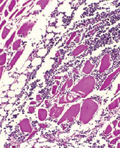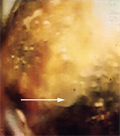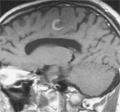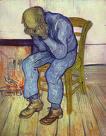The eLitMed.hu medical portal uses computer cookies for convenient operation. Detailed information can be found in the Cookie-policy.
Lege Artis Medicinae - 2004;14(12)
Content
[SEPSIS AS A NEW DISEASE - PROBLEMS IN HUNGARY]
[In our current understanding sepsis is a systemic inflammatory response syndrome to infections mediated by cytokines, an uncontrolled progression which may result in multiorgan failure and in the final stage septic shock. There are no pathognomic clinical signs or laboratory parameters in the early stage of sepsis and the diagnosis can be easily missed if the possibility is overlooked. One of the crucial points of therapy is early diagnosis: the mortality rate of severe sepsis is about 20% and that of septic shock is about 40-50%. The cornerstones of the therapy are the eradication of the focus of sepsis (surgical intervention and antimicrobial treatment), standard intensive care and the intervention in the pathophysiological process of sepsis. For successful treatment a multidisciplinary approach is required: only the early diagnosis and the teamwork of different specialists can decrease the mortality rate that is higher in Hungary than the international average.]
[ANTIHYPERTENSIVE TREATMENT OF DIABETIC PATIENTS]
[There are several evidence-based recommendations for the antihypertensive treatment of diabetic patients. The treatment should be chosen in such way that the target blood pressure (<130/80 Hgmm) is reached and the risk of target organ failure and cardiovascular mortality is minimized. Based on the studies, it seems that the angiotensin converting enzyme II receptor blockers and low-dose thiazide diuretics, along with their combinations can be recommended as first-line treatment in diabetes mellitus. Beta-receptor blockers and calciumchannel inhibitors are more effective than placebo and may be can be combined with angiotensin converting enzyme inhibitors, angiotensin converting enzyme II blockers and diuretics. This is important, because the effective antihypertensive treatment and the prevention of complications in diabetic patients can rarely be achieved with monotherapy only.]
[ROLE OF TISSUE ANGIOTENSIN CONVERTING ENZYME IN CARDIOVASCULAR DISEASES]
[The pathobiological aim of treatment with angiotensin converting enzyme inhibitor is to restore the balance between nitrogen-monoxide and angiotensin II due to inhibition of blood and tissue angiotensin converting enzyme. The clinical consquences of the inhibition of tissue angiotensin converting enzyme in patients with additionally high (HOPE) and low (EUROPA) cardiovascular risk without left ventricular dysfunction has already been demonstrated. Ramipril and the perindopril reduce the risk of combined end-point of these trials such as cardiovascular mortality, reinfarction and resuscitated sudden cardiac death. However, pharmacological and genetic differences in blocking of tissue angiotensin converting enzyme may influence the cardioprotective effect of various angiotensin converting enzyme inhibitors. Thus new, well-designed, controlled clinical trials are needed to determine the role of angiotensin converting enzyme inhibitor with different tissue angiotensin converting enzyme affinity in cardiovascular disease.]
[THE PRACTICE AND PROBLEMS OF EVIDENCED BASED DRUG TREATMENT]
[The organization, the budget and the practical delivery of modern healthcare are all based upon the sum of available evidences. However, in the individualized drug therapeutic decisions beside the external evidences the personal experience of the treating physician as well as the preferences and expectations of the patients must be represented with equal emphasis. Without the interaction of these three modern, patient oriented medicine is not conceivable. Evidenced based drug application is primarily based upon the results of prospective, randomized, controlled clinical trials. The individual experiences and the systematic observations represent the lowest level of the evidence hierarchy. The results of the clinical studies are expressed as the absolute difference of the results of the treated and control groups and as relative values relating the outcome of the experimental group to the control, respectively. In practice the easily interpretable term "number needed to treat" is widely used. It shows how many patients have to be treated relative to the control group in order to observe the expected therapeutic outcome in one case. The wealth of evidences cannot be efficiently used without systematization in the daily practice. Therefore, the data collected from the independent publications containing the primary evidences are subjected to a joint statistical evaluation. Thereafter, the results are combined in systematic reviews by independent experts following thorough weighting without prejudice. Then short summaries, more easily and rapidly digested by practicing physicians are made according to the same principle. They are restricted to the presentation of the problem, the tabulation of the summarized data and the conclusion. It is expected that in the future systems combining the electronically stored patient's data with external evidences making possible the patient oriented presentation of the sum and hierarchy of evidences will be extensively used.]
[LETHAL SEPTIC INFECTION IN RHEUMATOID ARTHRITIS]
[INTRODUCTION - The lethal septic infection was studied in a randomized (non-selected) autopsy population of 234 in-patients with rheumatoid arthritis. The patients died at the National Institute of Rheumatology between 1970 and 1999. PATIENTS AND METHOD - The aims of this study were to determine the prevalence of lethal septic infection with or without purulent arthritis in rheumatoid arthritis; the relationship between purulent arthritis and lethal septic infection; the clinically missed diagnosis of lethal septic infection and purulent arthritis; the influence of the main complications and associated diseases on lethal septic infection with and without purulent arthritis; the pathogens in lethal septic infection; and the clinico-laboratory parameters associated with lethal septic infection in rheumatoid arthritis. RESULTS - Lethal septic infection was found in 31 (13.24%) of 234 rheumatoid arthritis patients. Purulent arthritis complicated lethal septic infection in 15 (6.4%) of 31 patients. There was a significant association between lethal septic infection and purulent arthritis. Sepsis was detected clinically in 17 of 31 lethal cases and purulent arthritis was detected 9 of 15 septic infection complicated with suppurative articular processes. The coexistent complications (systemic vasculitis, AA amyloidosis), and associated diseases (tuberculosis with or without miliary dissemination, malignant tumors, diabetes mellitus) did not influence the prevalence of septic infection. The most frequent pathogenic agents were: Staphylococcus aureus, Escherichia coli, Proteus mirabilis, Pseudomonas aeruginosa, Klebsiella species, Streptococcus species. The patients with septic infection had significantly lower levels of beta-globulin, and higher values of Waaler-Rose or latex fixation test in comparison to patients without septic infection or without complications. CONCLUSION - Lethal septic infection may exist in rheumatoid arthritis without the classical clinical symptoms of sepsis, and clinically latent suppurative processes may be found at autopsy. The missed clinical diagnosis of a fatal complication is explained by the weak immune response and atypical clinical symptoms of elderly patients mainly treated with steroids and immunosuppressive drugs.]
[BOUVERET’S SYNDROME]
[INTRODUCTION - Gallstone ileus is a rare disorder among elderly population. The gallstone coming through a bilioenteral fistula into the gastrointestinal tract is stuck into the duodenal lumen causing ileus in approximately 0,5% of all cases. The syndrome is named after Bouveret, the first describer. CASE REPORT - Author present the case of 72 year old female patient with known cholelithiasis. Investigations proved existing cholelithiasis causing the patient abdominal pain one year before admission but she gave no consent to surgical intervention. An emergency admission to our department occurred after four days of abdominal pain and vomiting. The clinical status of the patient and abdominal X-ray examination suggested stomach evacuation disturbance. Double contrast barium swallow test and gastroscopy proved bowel obstruction caused by a gallstone. During surgery gastrotomy and the removal of gallstone was carried out. There were no postoperative complications and the patient was discharged home. CONCLUSION - Cholelithiasis should be resolved at any chosen time well before complications may occur. The simultaneous appearance of stomach evacuation problems and cholelithiasis should draw attention to this rare disease.]
[MAGNETIC RESONANCE IMAGING IN NEUROLOGY. PART I. - IMAGING OF THE BRAIN]
[Magnetic resonance imaging has become a basic imaging method in neurological diagnosis in the past decade. It provides excellent anatomical, morphological and in special indications, functional information on the central nervous system. In this issue, the role of magnetic resonance imaging in the diagnosis of brain diseases is outlined in connection with relevant clinical courses and the cardinal neurological signs.]
[THE RELATIONSHIP BETWEEN THE DEPRESSIVE MOOD OF PARENTS AND THE BEHAVIOURAL PROBLEMS OF THE CHILD]
[INTRODUCTION - In this article we analyze the relationships between behavior problems of adolescents and depressed mood of their parents based on literature review and on our own questionnaire surveys. METHODS - We present the data from two surveys conducted among Hungarian adolescents. The first survey was conducted among 1604 young women students, aged of 15-19 years. The second survey included 502 high school students in Budapest. Both surveys were aimed at the lifestyle, health behavior, risk behavior, and emotional state, as well as the social-economic status and family background of the adolescents. Data of both surveys were analyzed using the SPSS 8.0 statistical program package. The association between the mood category of mothers and fathers and the risk factors and emotional state indicators of their children were tested with χ2 tests, as well as the indicators of students whose parents were not treated for depression. RESULTS - Data from both surveys suggest that there are close relationships between the negative mood states of the parents and the behavior problems of their children, especially between the mood of mothers and the behavioral and emotional state of daughters. CONCLUSIONS - Our research data call attention to the phenomenon that girls react explicitly and quite sensitively to the mood state of their mothers while the boys’ behavioral and emotional states are less responsive to their parents’ mood. On the other hand, boys react more intensively to the emotional instability of their fathers than to the instability of their mothers.]
1.
Clinical Neuroscience
[Headache registry in Szeged: Experiences regarding to migraine patients]2.
Clinical Neuroscience
[The new target population of stroke awareness campaign: Kindergarten students ]3.
Clinical Neuroscience
Is there any difference in mortality rates of atrial fibrillation detected before or after ischemic stroke?4.
Clinical Neuroscience
Factors influencing the level of stigma in Parkinson’s disease in western Turkey5.
Clinical Neuroscience
[The effects of demographic and clinical factors on the severity of poststroke aphasia]1.
2.
Clinical Oncology
[Pancreatic cancer: ESMO Clinical Practice Guideline for diagnosis, treatment and follow-up]3.
Clinical Oncology
[Pharmacovigilance landscape – Lessons from the past and opportunities for future]4.
5.













